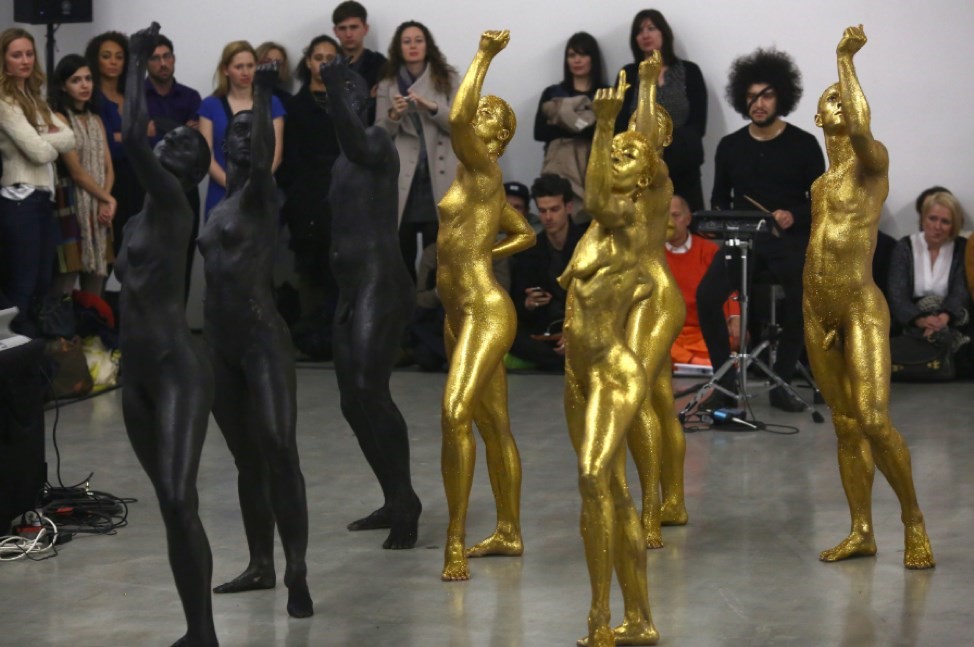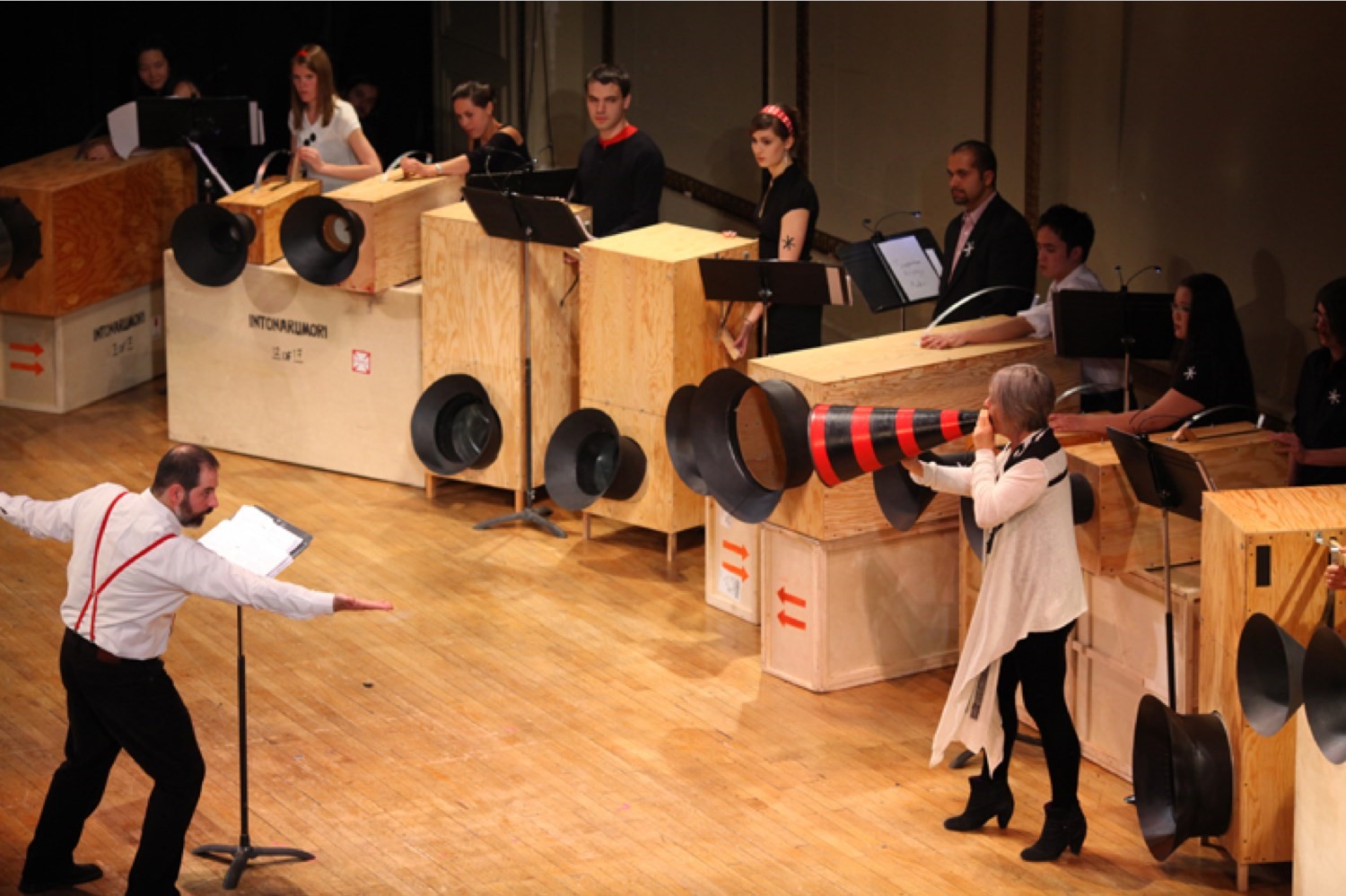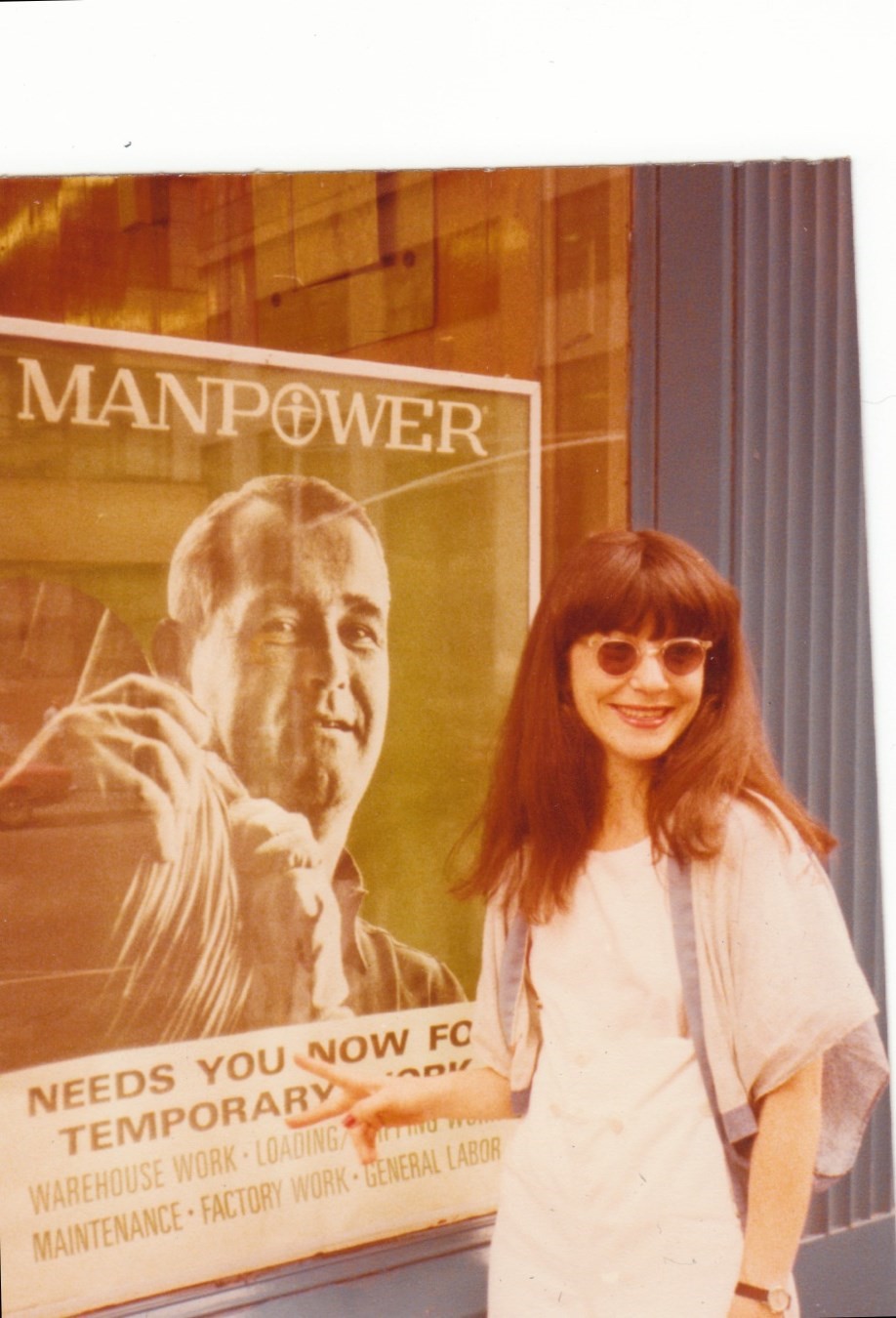As I took a seat and prepared to ask my first question, RoseLee Goldberg leaned forward. “I want to hear all about you,” she said. “What are you working on?” It became immediately clear why the artists she collaborates with feel so comfortable trusting her.
As the founder of Performa, the New York biennial that showcases new live commissions (this year opening on November 1), Goldberg is known for her curatorial work in the field of performance art. One of the most important curators of our time, she has enjoyed a career spanning over 40 years. Forging creative collaborations with practitioners, together they have shaped the way we view the world through their work. A visionary, she plays with format, her work hinging on constructing space for the artist’s idea to be realised. Seeing her role as the mouthpiece for the work to be understood by the public, often the pieces aren’t easily understood – making her abilities ever more impressive.
In a time when the title ‘curator’ has many meanings, I was reminded spending time with Goldberg that curatorial work is a calling – both instinctive and inherent, you see the world in a different way. “I think life is one endless eureka moment, everyday a new little miracle happens,” she reminded me.
Shonagh Marshall: You studied history of art at the Courtauld Institute. During that time you found inspiration in the work of Oskar Schlemmer, the painter, sculpture and choreographer associated with the Bauhaus. What were you inspired by?
RoseLee Goldberg: I grew up in South Africa, a complex and disturbing political environment that was also intensely vibrant – musically, visually, and in the landscape. I was a dancer from a very young age, and a painter, and studied political science and fine art at university. I struggled about which direction to take, how these different strands might overlap, and settled upon the Courtauld and art history as a way to incorporate art, politics and dance. When deciding on my dissertation I discovered the work of Schlemmer, and read in his diaries about his obsession with being a dancer and a painter, and how he merged them. Also how he used dance as a teaching tool in the stage workshop of the Bauhaus, but also for his drawing and sculpture students. I wrote my thesis on performance at the Bauhaus, which eventually led to my book [Performance Art: From Futurism to the Present].
SM: After graduating from the Courtauld you became director of the Royal College of Art’s gallery. This was an esteemed position.
RG: Yes. I decided to apply for it knowing nothing about the position, or what it meant to run a gallery. In the interview I applied Bauhaus thinking to describe the job as I saw it, considering the different departments of the RCA as material for a cross-disciplinary exhibition programme and as a way to encourage the departments work with one another. If hired, I explained, I would ask the graphic design students to design the invitations, the interior design students to come up with the installations, the general studies department to conduct the research and write the catalogues. I got the job and then I had to make it all work. I jumped in at the deep end.
SM: Every Tuesday night you would stage these legendary, myth-making events. What happened at them?
RG: They were fabulous. Susan Hiller said to me 30 years later every Tuesday night a little bell would go off in her head and she would think, ‘I should be at the RCA to see the performance’.
SM: What was London like during this time?
RG: London in the 1970s was rather sleepy with regards to contemporary art. I remember the newspapers were filled with outraged complaint when the Tate bought Carl Andre’s ‘pile of bricks’ [Equivalent III, 1966], but there was a history in London of fairly radical conceptual gestures, by artists such as John Latham who chewed a Clement Greenberg book borrowed from the Central Saint Martin’s library (1966) or Gilbert & George who stood on a table and performed their singing sculpture Underneath the Arches (1969). When I started at the RCA I didn’t know any of these artists so the second month on the job I got on a plane and went to the Venice Biennale, then to Documenta and soon after that, to Los Angeles and New York. I met so many people, most of whom I still know today – I invited them to come to the RCA, and make work or present talks. We had a tiny budget but people loved the idea of coming and the programme took off. It was an extraordinary time; there was a real sense of discovery. My curatorial education came from meeting as many people as I could, and listening to what they had to say. In response to these conversations I created a gallery programme that was event-driven, a space to put ideas into action, across all media with artists like Christo, Marina Abramović, Christian Boltanski, Anthony McCall, Giulio Paolini and many more. It was a very exciting time.

SM: How much are curatorial endeavours about the ability to connect with people, both the artist and the general public?
RG: In many ways the curator is a mouthpiece, a translator of sorts, a conduit for artists’ ideas. There is a huge sense of responsibility to serving the artist and her or his work. The curator must know the history of each artist, and the larger history, to provide context. I think of curating and writing as very close; there are similarities in the research that’s involved and the thinking that goes into writing and editing, the thinking around what material makes the cut. You have to turn that information into something accessible, into a story that enthralls. During the curatorial process you get very close to the artist and they tell you things that they might not want to say out loud in public. It is a kind of detective work; you are unravelling all kinds of stories then piecing those bits back together again so that the artist’s ideas are front and centre.
SM: Alongside your curatorial work in the 1970s you were also writing for Spare Rib, the seminal second-wave feminist magazine. What were you writing about?
RG: I was mostly writing about my trips to New York, where there was a high-energy group of extraordinary women protesting the absence of female artists in museums, galleries and art schools. Several gatherings were in Lucy Lippard’s loft on Prince Street, and protests were organised at museums or art schools about feminist and gender issues. The first piece I wrote for Spare Rib was about being at one of these gatherings and who I had met so many great women artists, Jackie Winsor, Jackie Ferrara and Laurie Anderson. I should add there were also quite a few good men like Vito Acconci, Dennis Oppenheim or Smithson.
SM: When did you move to New York?
RG: In 1975. I had worked for three years at the RCA; the shows were getting great reviews but I was coming to visit New York regularly and I simply didn’t want to leave. The concentration of conversations was really exciting; everyone was living downtown in such close proximity. There was a very interesting crossover between different genres and generations. The city was incessant, unceasing. I thought, ‘I have to live here, because there is no other way to see everything and do everything’. All these years later, it’s as maniacal and fast-paced as it ever was. New York is a drug.
SM: You mentioned downtown New York, what was downtown like during the 70s?
RG: We owned downtown. Everything below 14th Street. People from uptown didn’t come downtown – SoHo looked pretty scary to them; there weren’t many street lamps, there was one bodega, two or three bars. It was very scrappy and we liked it that way. But at the same time it was very serious, people really wanted to discuss ideas, what was happening in the city and in the world, ideas about art, politics, media.

SM: After moving to New York and making these connections you became the curator of The Kitchen, which is one of the most exciting spaces in New York to this day.
RG: The Kitchen was entirely unique, an extraordinary place for artists of all disciplines. When I moved to New York I was teaching and doing a lot of writing. I wrote my book Performance Art, which came out in 1979. As I finished the manuscript, Robert Longo, who was very involved with Kitchen, introduced me to the artists running the space (Eric Bogosian and Rhys Chatham), since they needed someone to curate performance and video. I was the first curator who wasn’t an artist.
SM: You mentioned the book you wrote Performance Art. How were you formulating ideas around performance?
RG: I felt the entire history of live performance had been left out of the history of art. I felt strongly that it was important to understand the role of performance in art history and that it was necessary to connect the dots from decade to decade. How did Futurism relate to Dada? What was the connection between avant-garde art and theatre for Russian Constructivists? One might study these isolated movements, but performance was never fully explained. My intention was to show how performance was a critical catalyst for different ways of thinking about painting, sculpture, theatre, poetry and architecture, that art ideas were activated through performance. My book was a kind of revisionist art history.
SM: In turn that’s what you were doing in real time at The Kitchen. You were bringing the conversations that were happening into the gallery space. What was the product of some of these collaborations?
RG: We created the first viewing room where new video by artists was shown in continuous programming, and a small gallery where I organised the first one-person exhibitions of Robert Longo, Cindy Sherman, Sherrie Levine and Jack Goldstein, among others. As always, I refused to accept barriers between disciplines. At night we would gather in the back room at The Kitchen, piled high with speakers and television sets, and we would watch The Gong Show or Mary Hartman, Mary Hartman. Then we would take off into the dark streets for CBGBs or The Mudd Club. We were looking at punk, hip hop, new film, noise music. There was an excitement in the air that came from one discipline infecting another. It was also the beginning of the Japanese fashion wave in New York; Issey Miyake was on the cover of Artforum in 1982, so there were eye-opening conversations about new ways of looking at art and fashion.
SM: After working in the art world during the 80s and 90s you decided to found Performa in 2004. Where did the idea come from?
RG: Three things were happening. Although I wrote the book in 1979 people were still saying to me, ‘What’s going on in performance now?’ As though it had gone away. To me this signalled that performance was still not being understood. I wanted to create an organisation that would tell this history in a much more public way, where performance wasn’t a sideshow but it was the main show. The second thing was New York was very top heavy in 2004 (and even more so now). Everyone was talking about the price of art, about the emerging market in Shanghai or the new scene in Berlin. I thought, ‘I am not going anywhere so I better make something to be excited about in New York, produce the performances that I wanted to see’. I was frustrated that performance wasn’t being supported; it seemed to be stagnating. In the late 1990s there was so much really gorgeous work being made, new film installations by artists such as Isaac Julien, Stan Douglas, Steve McQueen, Shirin Neshat and Gillian Wearing. Their work was beautiful to look at and full of powerful content – intellectually, and politically – all the things we look for to fill us up with ideas. I wanted to create an organisation that commissioned new work for the 21st century. I started by going to artists who had never done performance before and asking them ‘Would you ever think of doing a live performance? I think you have all the elements.’ The results have been thrilling.

SM: What is the commissioning process like?
RG: It is a very personal process. The relationship with each artist can build for over two years. Each project has a different story; for example with Rashid Johnson, every time I saw him I would say, ‘I know you don’t do performance but if you ever have an idea, let me know’. In early 2013, eight or nine months before the biennial, he said ‘I have an idea’. He proposed to do Dutchman by LeRoi Jones in the Russian and Turkish Baths on 10th Street, and it was remarkable. Everyone who saw it, remembers the experience. Or, two years ago, I saw the work of Bunny Rogers. It was a large projection in a pristine space with some wall text she had written and I was riveted, and I thought to ask her to do a live version of the video installation. We will present her first performance for Performa 19, in a couple of weeks.
Choosing which artist to work with comes from sensing a particular quality in the work that could go live. Then what occurs after the invitation you have no idea, for us or the artist: the proposal comes with 100 per cent risk and 100 per cent trust. There is so much listening, and many questions. We follow the artists’ lead – their readings and research and put other things on the table, such as historical references and contemporary counterpoints. There are a lot of ongoing conversations. We are commissioners, so this is the process, we are not presenters.
SM: What are you excited about this year?
RG: All the projects are very powerful, very visual, very different. There’s an amazing piece by Paul Pfeiffer at the Apollo Theater where live and live-feed performers will play the sounds of a game of football, the marching band, the applauding crowds, but without the game. If you know Paul’s early videos, you will recognise that this is exactly what he has been doing in video but for Performa it will be on a scale beyond his wildest imagination. We are also working with a wonderful artist, Samson Young, from Hong Kong, who is also taking us into entirely new territories, with an ancient Chinese myth of Eight Immortals, and a mechanical ballet with large cranes carrying musicians in the air. Another is by Kia LaBeija, who steps out of her photography, dance and voguing background. For Performa she is working with a designer and stylist who are making costumes inspired by the Bauhaus, as are her movements and underlying concepts. It will be a beautiful, very moving piece. Everything we commission has to change you. It must be among those things in your life that you never forget.
Performa 19 runs from November 1 – 24, 2019 in New York.
